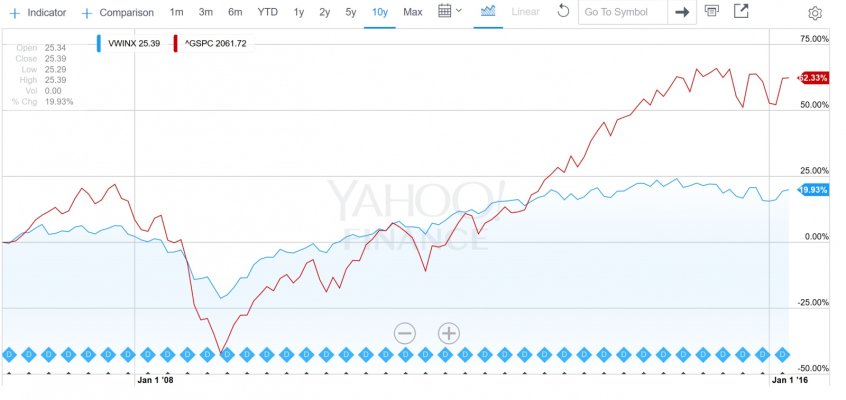I am a fan of this strategy. I believe it is an alpha-generator. Because of the demand for S&P 500 puts, they tend to be overpriced - the implied volatility of the put sold tends to be greater than the subsequent realized volatility. Over time this is the source of the alpha. It is very easy to implement, so I would suggest you do it yourself rather than pay part (or all) of your alpha to a manager.
We have a forum member named utrecht who did this strategy quite successfully with slightly out-of-the-money weekly SPY puts. There is a lengthy thread on the subject. Maybe someone can post a link.
I also write a modest number of covered calls and cash-secured puts.
I think it does generate alpha for the reason FIRE mentioned but also because reduced portfolio volatility is so valuable to a retiree.
A very crude approximation of the stock market returns will look like this.
Year 1 +40%
Year 2 +20%
Year 3 -20%
Year 4 +10%
Year 5 -0
Averaging about 10%/year.
If you employ options writing on a portion of your a portfolio and get 5% premium/year, you'll make less money in good years, lose less in bad years and break even in the relatively rare normal years.
So your returns might look this.
Year 1 +35%
Year 2 +15%
Year 3 -15%
Year 4 +10%
Year 5 +5%
Still 10% a year.
For a 25-year-old with say 25-30 years ahead of them the sequence of returns doesn't matter that much, and the higher volatility is your friend. (i.e dollar cost averaging). In fact, when you consider the fairly high transaction cost for writing options, the huge number of professional with advantages of sophistication,and speeds (e.g.high free traders/Flash boys) it probably doesn't make sense for a young person to do this.
However, for retired folks I think it helps. . I don't need 30% up years in my portfolio so if I only make 20% during this bull markets I am ok with that. What I need to avoid is a long string of 0 to negative years.
I also find that option writing is counter cyclical, I personally pay attention to the VIX when it is above 20, I write a lot of puts. When it is 15 or so, I'm pretty selective (I have 200K in a IRA that I write cashed secure put on monthly basis), but don't write many other options. When it gets close to 10, I just stop writing all together. This works out well for me, because when we are in a real bear market, I write more options than in a bull market.

